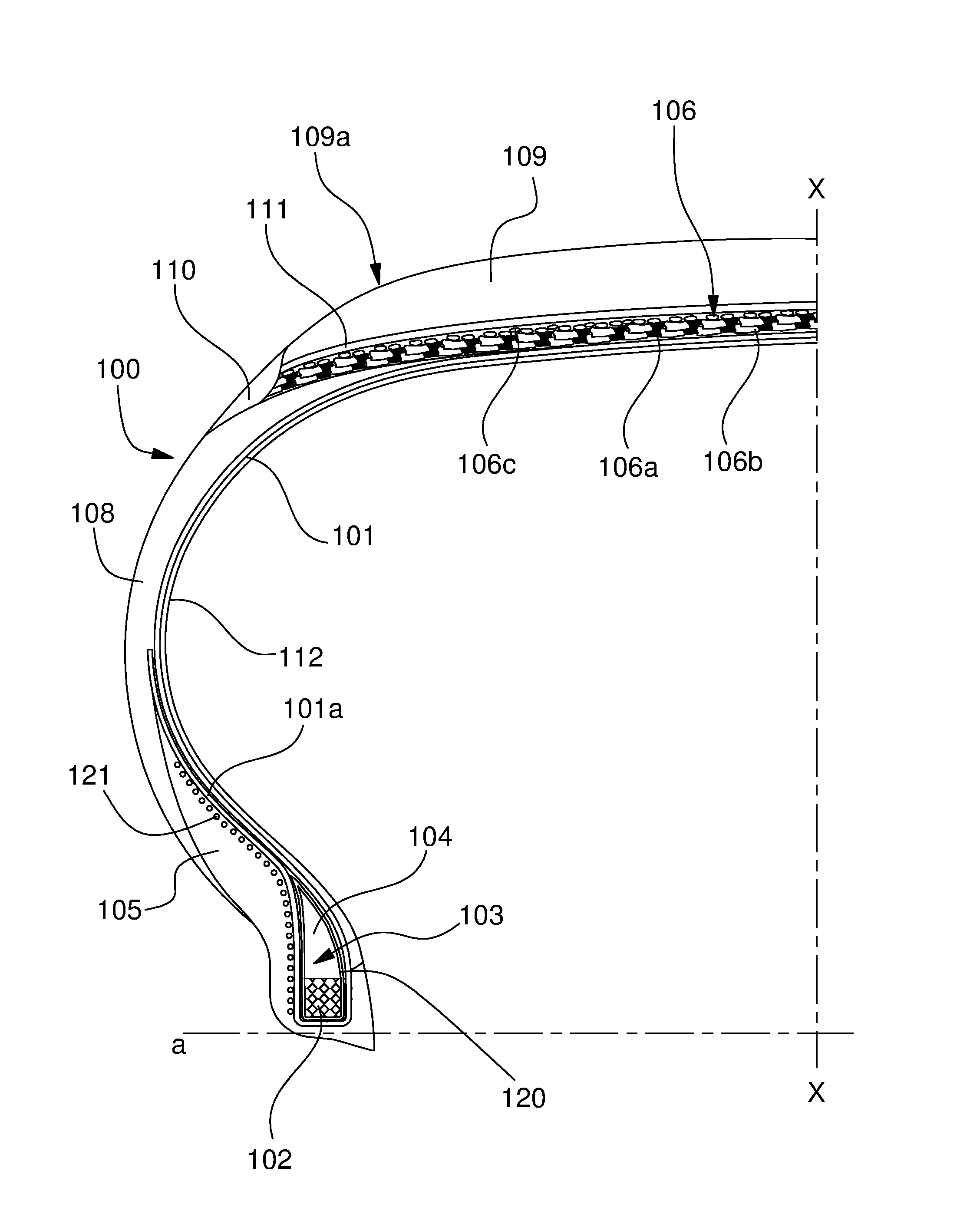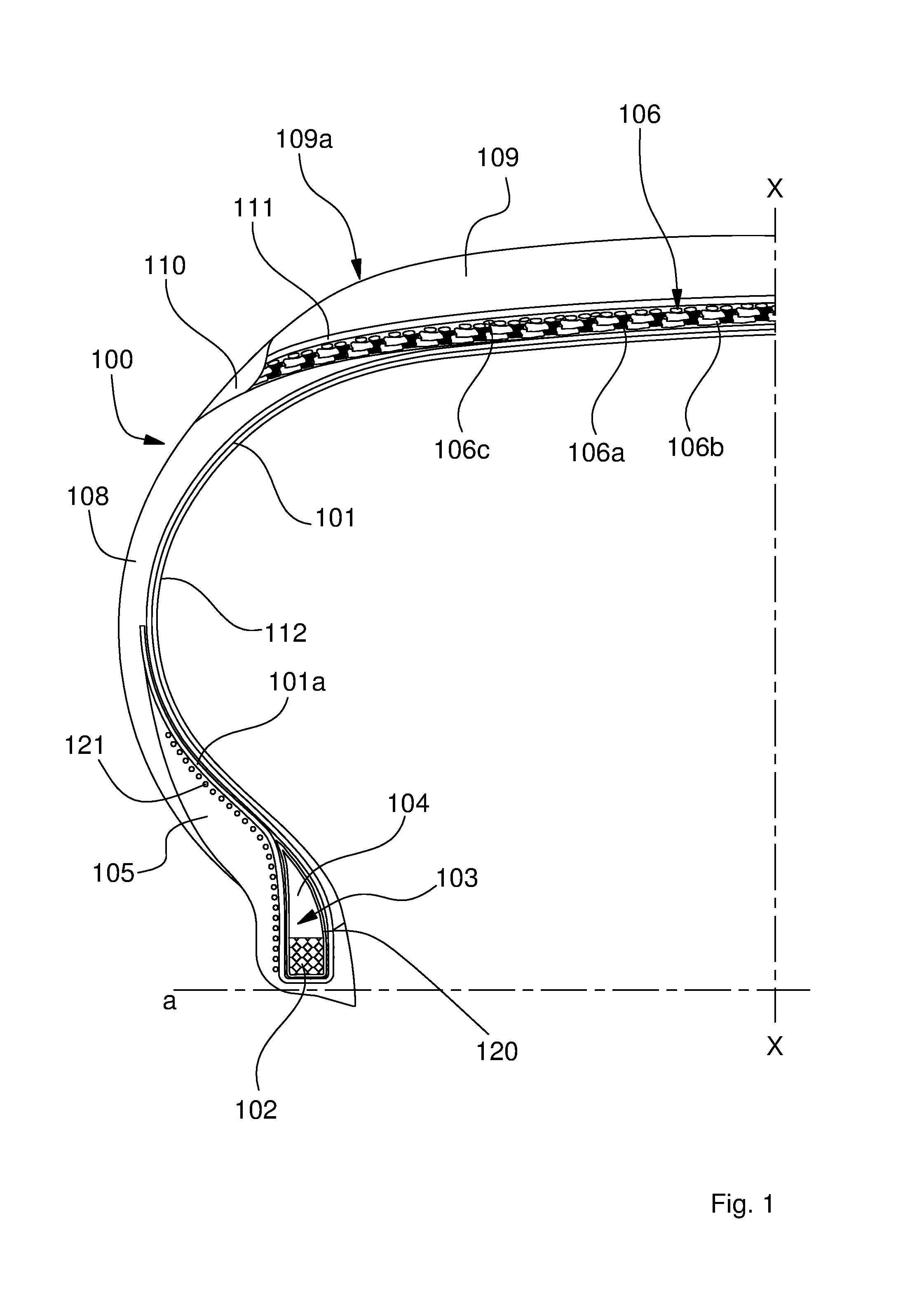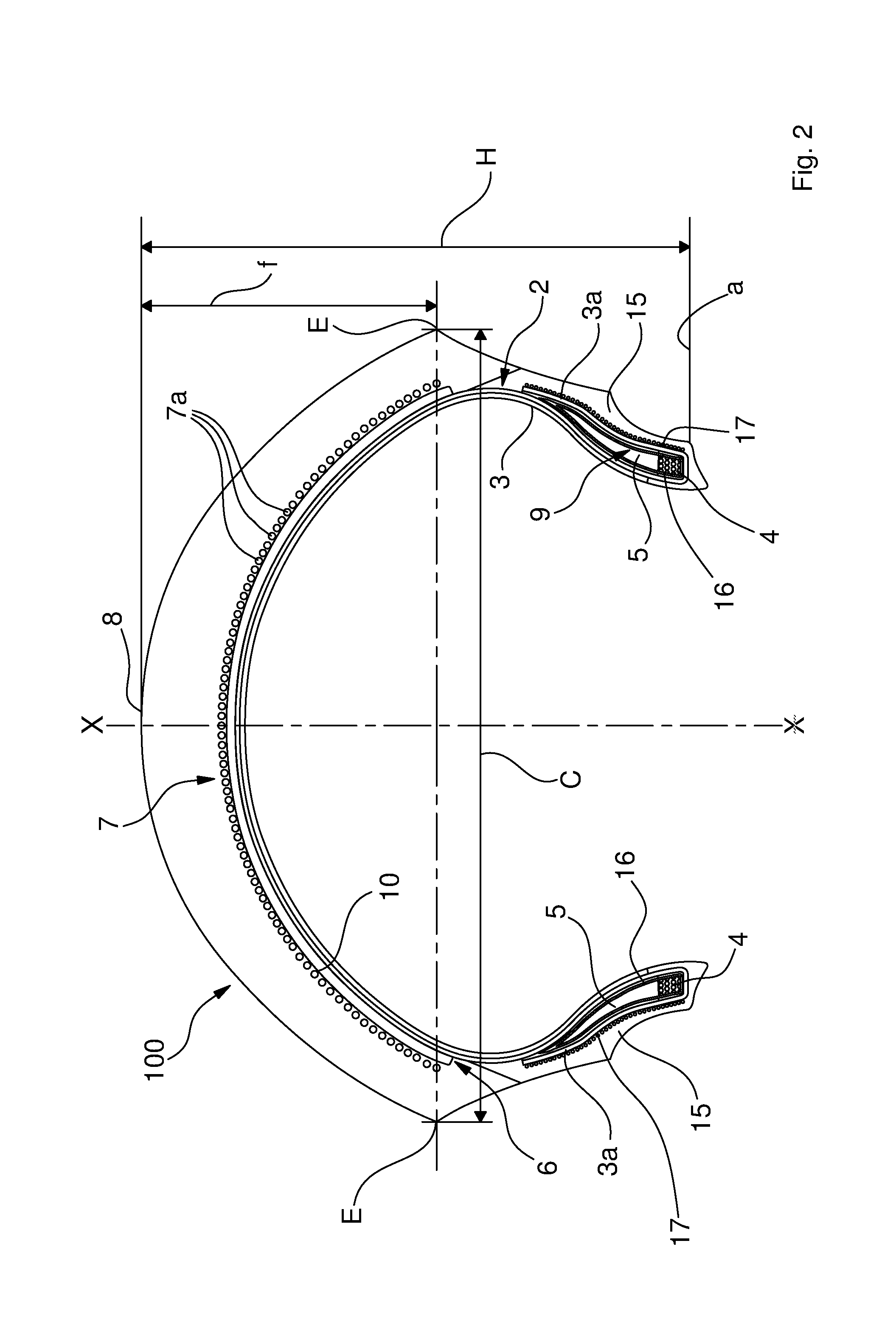Tyre for vehicle wheels
a technology for vehicle wheels and tyres, which is applied in the direction of tyre parts, vehicle components, medical preparations, etc., can solve the problems of rfl-based compositions that are not suitable for industrial use, t aqueous compositions of rfl are not particularly stable, and progressive fouling and accumulation of deposits, so as to achieve a high level of performance, less harmful to the health of workers and the environment, and respect for human health and the environmen
- Summary
- Abstract
- Description
- Claims
- Application Information
AI Technical Summary
Benefits of technology
Problems solved by technology
Method used
Image
Examples
example c
[0388] comparatives. I: invention
[0389]As can be seen from the data shown in tables 3a and 3b. it is evident that the compositions according to the invention (Example I-1 and I-2) achieve excellent levels of adhesion especially with Compound 2 and with only a single dipping of the cords. These adhesion values obtained with the present compositions are at least comparable to the high standards represented by the RFL system currently in use (Example C-1), nevertheless presenting undoubted advantages in terms of stability and safety even with respect to alternative compositions (Example C-2 and C-3). Moreover, since the application process does not require any pre-activation, it is particularly rapid and economically competitive.
[0390]Table 4 below records the strength values (expressed in N / 20 mm, with the respective standard deviation values in brackets) necessary for obtaining the 180° opening of a peeling specimen (strap peeling) obtained by means of the superimposition of two laye...
PUM
| Property | Measurement | Unit |
|---|---|---|
| molecular weight | aaaaa | aaaaa |
| molecular weight | aaaaa | aaaaa |
| length | aaaaa | aaaaa |
Abstract
Description
Claims
Application Information
 Login to View More
Login to View More - R&D
- Intellectual Property
- Life Sciences
- Materials
- Tech Scout
- Unparalleled Data Quality
- Higher Quality Content
- 60% Fewer Hallucinations
Browse by: Latest US Patents, China's latest patents, Technical Efficacy Thesaurus, Application Domain, Technology Topic, Popular Technical Reports.
© 2025 PatSnap. All rights reserved.Legal|Privacy policy|Modern Slavery Act Transparency Statement|Sitemap|About US| Contact US: help@patsnap.com



